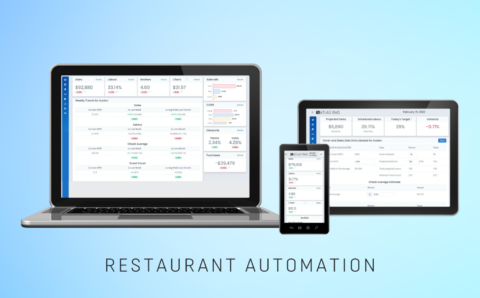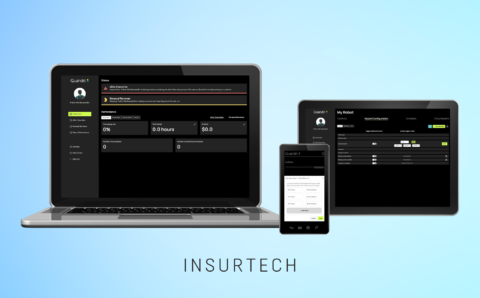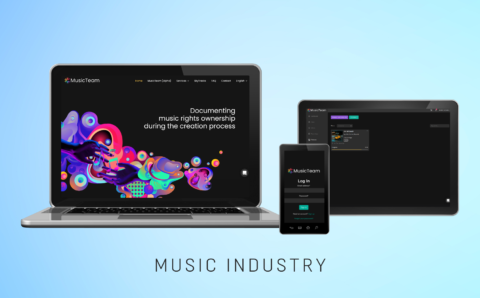
Django is a versatile and potent Python-powered web framework that is applied across numerous businesses and industries. Its solidity helps developers create electronic medical record (EMR) systems, eCommerce platforms, online marketplaces, learning management systems (LMS), inventory management and supply chain management solutions, tournament management products, and even community-driven websites. Initially, this framework’s main purpose is to accelerate the implementation of sophisticated and compound web applications.
Django offers a wide variety of instruments and functionality that help implement a wide range of projects, such as:
-
- Content Management Systems (CMS)
- E-commerce platforms
- Social network solutions
- Data-driven applications
- Booking and reservation systems
- APIs and web services
Due to such characteristics as flexibility, scalability, security, and prioritization, Django has become a choice for many major and famous products, like Instagram, Pinterest, Disqus, Eventbrite, and more. With its collection of libraries and extensions, software engineers get a tailored and seamless solution for handling increasing traffic.
Being a popular option for robust and supple server applications, Django is initially used for the backend. But can Django be used for frontend?
Django has a number of capabilities in the context of frontend development, Its functionality and tools make this framework useful for creating and managing a user interface, handling client requests, and procuring smooth interaction with the browser.
Table of Contents:
Is Django a frontend or backend framework?
Django is primarily leveraged as a backend framework rather than a frontend framework. Its main responsibility is to handle server-side logic and data processing for web applications.
Developers write code that runs on the server and manages various aspects of the application, such as processing requests, interacting with databases, and performing business logic, which is core using Django for backend.
Still, Django is considered to be a full-stack framework because it provides specific frontend capabilities. In particular, it comprises a templating engine that enables you to generate HTML dynamically and render data and forms on the frontend, creating HTML markup and ensuring their interaction with the user. This greatly simplifies the process of designing and validating forms within the frontend development process. The Django frontend templates engine delivers a wide range of standard tags and filters that facilitate data manipulation and presentation. Moreover, the framework supports the creation of custom tags, which allows the extension of the functionality and implement unique frontend logic.
At PLANEKS, we efficiently use the flexibility of the framework so orde our Django development services and benefit from its frontend and backend core capacities.
Can you use Django for the frontend?
Being a full-stack framework, Django has numerous areas where you can seamlessly apply it for frontend development.
The significant value of using Django for frontend development is the availability of a pretty extensive ecosystem. The framework boasts a broad spectrum of libraries and packages that can be leveraged to enhance the frontend functionality of a web application.
Django’s Staticfiles tool helps manage and serve static files such as CSS, JavaScript, and images. It provides a built-in mechanism for structuring and applying static assets as needed. The Django Compressor library streamlines the compression of the aforementioned static assets, reducing their file size and improving frontend performance. Such features allow developers to manage and distribute static resources effectively, enhancing the overall user experience from the interaction of the product.
Using Django and JavaScript, you can get features like template tags and filters that enable seamless integration of JavaScript code into templates. You can easily pass data from the backend to frontend scripts for dynamic rendering and interactivity.
Furthermore, Django offers the opportunity to define custom widgets on the frontend. This means that developers can describe and implement custom UI components or widgets in the frontend code while ensuring they are rendered and automatically connected within the Django framework. Such excellent flexibility allows for greater customization and control over the frontend elements of the application.
Building a Django Team?
Learn the key strategies for hiring skilled Django developers to create robust, scalable web applications.
How can you use Django for the frontend?
As already mentioned, designing frontend with Django is focused on server-side HTML page rendering. By applying Django’s features in combination with its supportive ecosystem, software engineers can streamline the development process and create an efficient and user-friendly frontend for customers. Thus, Django can be used for the frontend with the following tools:
-
- Built-in template support, a powerful template language, and template engine for creating dynamic HTML templates with minimal code
- Integration with static files, their management, and maintenance. This framework automatically handles building, compressing, and caching these files to improve performance.
- Extensive toolset and features to simplify frontend development, such as forms, data validation, cross-site request forgery protection (CSRF), and more.
What are the best frontend frameworks for Django?
For projects where the majority of the functionality lies on the frontend, and the backend primarily serves as an API to handle data, frameworks like React or Vue.js are the best-fit choices for uniting with Django frontend technology. These frontend frameworks excel in building complex and interactive user interfaces. The frameworks offer component-based architectures, state management, and efficient rendering, which results in highly responsive and engaging frontend experiences. Besides, the rich range of instruments each framework offers greatly boosts software engineers’ productivity, accelerates development cycles, and enables rapid prototyping.
However, for simpler projects like content-based websites or constraints on development time and team size, Django’s built-in templating engine can work perfectly fine. Vanilla JavaScript, which refers to using the native browser features without frameworks, can be used on the frontend as well. You can explore additional tools like HTMX, AlpineJS, or other JavaScript libraries to enhance interactivity. What’s more, jQuery is still actively used and can be integrated with Django for frontend functionality.
Ultimately, the selection of framework to use with Django frontend for design depends on the specific project requirements, team expertise, and level of project complexity. Django provides the adaptiveness to integrate with a wide range of frontend technologies, allowing you to choose the best option for your project.
Is Django good for the frontend?
Talking about Django use cases, it’s beneficial to leverage it for server-side rendering of content projects. This framework was originally designed for such tasks. If you need to create, read, update, and delete (CRUD) data in SaaS projects, Django is an appropriate tool to use. What’s more, when creating pages with operational content, Django handles that perfectly. For example, it helps create forms for user input, process that input on the server-side, store it in a database, and display the updated information back to the user. It provides powerful tools for data management and query processing, enabling the implementation of vibrant and engaging pages simply.
However, if the bulk of your project’s key logic lies on the frontend side, Django might not be the best option. Heavy frameworks like React may be more suitable in such cases.
Need Expert Django Development?
Accelerate your project with our experienced Django developers. Deliver custom solutions tailored to your needs.
All in all, Django has appropriate tools to use for frontend, which makes this framework full-stack. Still, the framework to use for frontend should be chosen based on the peculiarities of your specific case, so the decision whether to use Django should be taken considering its relevance to each individual case.
Our team of professional technicians is profound in making the most of Django’s capacities to produce flexible, seamless, and sophisticated solutions taking into account the range of aspects that impact your specific project.
Book a call with the PLANEKS experts today, and we’ll analyze and discuss your technical project idea to apply our efficiency in the most beneficial way for you.

Restaurant Management
Launched a cloud-based system for restaurant management, improving profitability by automating operations and providing real-time key performance indicators insights.

Robot Factory
Robot Factory software helps insurance brokers automate document management and streamline operations, resulting in up to 90% faster workflows.

MusicTeam
MusicTeam launched v1 with our expertise, streamlining metadata for artists and securing essential government support for cultural development.

